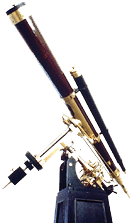
|
The
Starlight initiative picks up the legacy of several experiences, either accomplished or in
progress, in defence of the night sky all
over the
world, such as:
Last decade's International
meetings and declarations in defence of night sky such as: Universal Declaration of Human
Rights for Future Generations (1999) or the Venice Declaration (2002).
The re-encounter of tangible and
intangible cultural heritage induced by astronomy and the feelings that star observation
aroused in all cultures through the history of mankind. This rediscovery has been
expressed by experiences such as the "Thematic Initiative Astronomy and World
Heritage" launched by UNESCO in 2003, the appearance of new branches of knowledge
like archaeoastronomy and the INSAP (Inspiration of Astronomical Phenomena) meetings.
Increasing scientific activity
and initiatives alerting to the effect of light pollution or artificial night lighting on
some species or ecosystems, leading to consider attentively night's ecological dimension:
life expresses itself 24 hours a day. An example is given by the work developed by Parks
Canada, towards the control of outdoor lighting and the reduction of light pollution in
national parks, endorsing the needs for protection of nocturnal ecology and for more
science in that field.
Increasing recognition of starry
night skies and natural darkness as the main factor of threatened nocturnal landscapes,
both in remarkable cultural spaces and in protected natural areas. This new sensibility is
expressed through initiatives such as "Natural Lightscapes" protection (US-NPS)
and the first recognitions of "night landscapes" by the European Landscape
Convention.
-
The foundation of International
associations and initiatives in defence of the increasing light pollution such as the
International Dark Sky Association, leading very active and enriching experiences, and the
development of the first maps showing the lavish use of lighting in several areas of our
planet.
-
The progressive inclusion of the
defence of sky quality into initiatives dealing with energy efficiency promotion and clean
energy development as vectors to reduce light pollution and atmospheric emissions: Kyoto
and beyond. Energy sustainability and night sky protection go hand in hand in initiatives
such as greenlight projects or the European design competition "Lights of the
Future".
-
The flourishing of laws aimed at
night sky protection, together with new regulations and codes fighting against light
pollution. Originally limited to areas close to astrophysical observatories, they have
nowadays spread to towns and inhabited rural areas, which claim the common right of a
clear night sky, as a factor of quality of life and health, to regain the everyday culture
of observing a starry sky.
-
The creation of technical
offices and bodies aimed at the protection of astronomic observation areas from
atmospheric, radio-electric and light pollution, such as the IAC's Technical Office for
the Protection of the Quality of the Sky del IAC, the Light Pollution Science and
Technology Institute, and the OPCC in Chile, whose results allowed some important changes
in the technological and industrial fields, as it is shown by the advances supported and
registered by the CIE (International Lighting Commission).
-
The increasing recognition of
the night sky as a sustainable development asset and resource, expressed through new
initiatives in observation-related tourism and the new role of the astronomy-related
knowledge tourism.
|